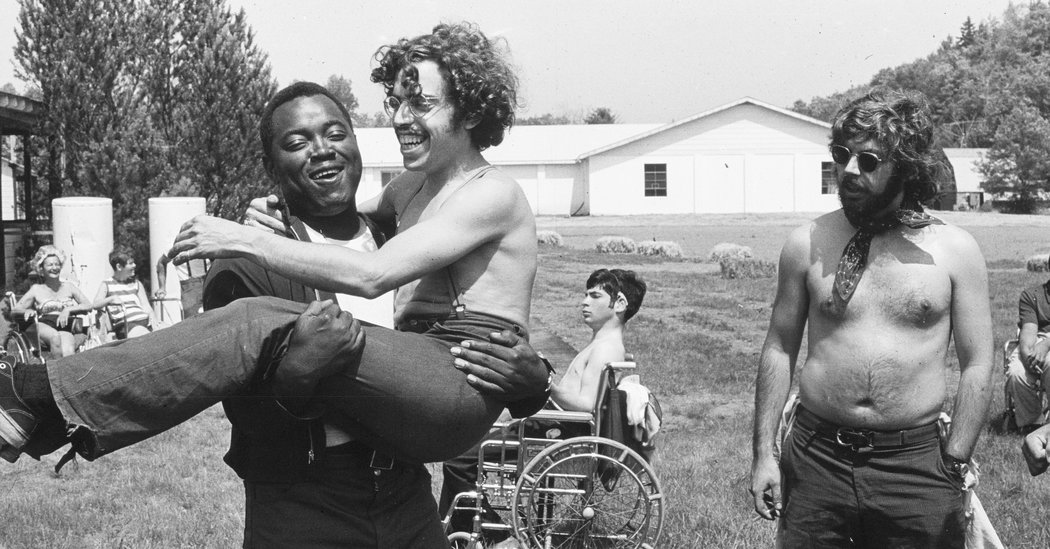No matter how fondly you recall your time at sleepaway camp, chances are your experiences weren’t as formative as the ones recounted in “Crip Camp: A Disability Revolution,” a documentary that begins streaming on Netflix on Wednesday. The film, directed by a former camper, Jim LeBrecht, and Nicole Newnham, makes the case that a Catskills summer camp for the disabled fostered a sense of community and creativity that fed directly into the American disability rights movement in the 1970s.
Camp Jened, founded in 1951 and shut down after the summer of 1977, appears in many respects to be like any other summer camp from the free-love era, with warm-weather flings and arguments over dining-hall meals. But it was also, for many of the campers, a place where they could live in a free atmosphere with others who had a disability, and where the friendships they cultivated boosted their confidence.
Jened campers got the same tough-love approach that kids at any camp would get. As Lionel Je’ Woodyard, a former counselor, explains, “You wouldn’t be picked to be on a team back home, but at Jened, you had to go up to bat.” An African-American from Mobile, Ala., Je’ Woodyard remembers seeing similarities in the treatment of blacks in the South and the shunning of the disabled.
“Crip Camp” draws extensively on terrific contemporaneous black-and-white footage shot by a collective called the People’s Video Theater, for which participants were invited to speak their minds. But even more than those activist videos, “Crip Camp” unfolds from a perspective of lived experience. The failure to recognize the disabled as sexual beings becomes a recurring theme. Denise Sherer Jacobson, who has cerebral palsy, says that as an adult she had a healthy appendix removed because a surgeon didn’t consider the symptoms of gonorrhea.
Indeed, despite the film’s title, the early scenes, focusing on the camp, turn out to be a kind of a getting-the-band-together story for the post-camp years, when several Jened alumni became nationally visible activists and resettled around Berkeley, Calif. Judy Heumann had sued for discrimination in New York after she was denied a license to teach and became a leader in San Francisco in the 504 Sit-In of 1977, when activists demanded federal regulations guaranteeing civil rights for the disabled. (Heumann also served as a special adviser under President Barack Obama, who, along with Michelle Obama, is one of this film’s executive producers.)
Newnham and LeBrecht deftly juggle a large cast of characters past and present, accomplishing the not-so-easy task of making all the personalities distinct, and a build a fair amount of suspense in their nearly day-by-day account of the sit-in. LeBrecht, who appears as a talking head (a longtime sound designer, he also contributed to the movie’s audio mix), notes that this was no ordinary demonstration. Protesters had to persist without access to necessities like catheters or backup ventilators.
“Crip Camp” repeatedly links the struggles of the disabled to other fights for civil rights. The Black Panthers brought in hot meals to keep the protesters fed. HolLynn D’Lil, a journalist who became a paraplegic after a road accident, says that her change in perspective taught her that disabled rights were rights for everyone.
Ultimately, “Crip Camp” has a universal message: Inspirations that begin in youth can lead to radical, world-changing results. At the end, a number of former campers reunite at the camp’s unprepossessing present-day site. They see something more, and so will you.
Crip Camp: A Disability Revolution
Rated R. Talk of sex. Running time: 1 hour 46 minutes.

















